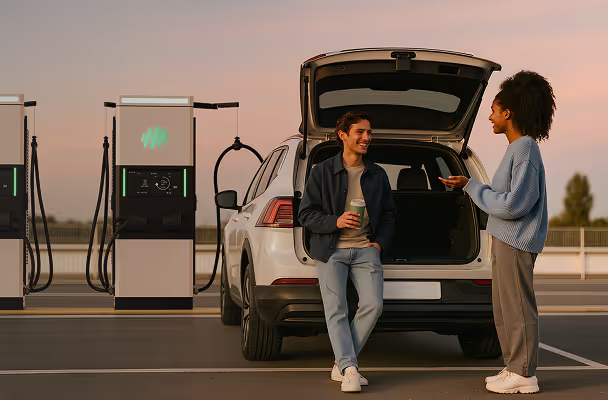Public Charging Infrastructure – Powering the EV Transition

What is Public Charging Infrastructure?
Public Charging Infrastructure refers to the network of EV charging stations that are accessible to the public, enabling electric vehicle owners to recharge their batteries at locations away from home or private facilities. These include roadside chargers, commercial parking lots, shopping malls, petrol stations, and highway corridors.
It plays a crucial role in enabling long-distance travel, supporting EV adoption, and ensuring equitable access to electric mobility.
Why It Matters
- Supports EV Adoption: Builds consumer confidence in switching to electric
- Enables Long-Distance Travel: Strategically located for route-based charging
- Reduces Range Anxiety: Ensures access to charging in urban and rural areas
- Decentralizes Energy: Integrates with solar, storage, and smart grid systems
Types of Public Charging
- AC Chargers (Level 1 & 2): Ideal for urban, shopping, and work zones (3.3–22 kW)
- DC Fast Chargers (Level 3): Suitable for highways and commercial hubs (30–350+ kW)
- Megawatt Charging Systems (MCS): For heavy-duty vehicles and logistics depots (up to 3.75 MW)
- Battery Swapping Stations: Quick energy replacement model for 2Ws and 3Ws in select geographies
Components
- EVSE (Electric Vehicle Supply Equipment): Physical charging units
- OCPP-Compliant Software: Enables remote monitoring and interoperability
- Payment & Authentication Systems: Mobile apps, RFID cards, Plug & Charge
- Power Grid Connection: Utility tie-in or renewable energy integration
- Remote Management Platforms (RMS/CMS): Real-time operation, billing, and analytics
Deployment Models
- Government-Backed Networks: City and highway electrification projects
- Private Operators: Commercial networks (e.g., Exicom, ChargePoint, Tata Power EZ)
- PPP (Public-Private Partnerships): Shared investment in public infrastructure
- Retail and Hospitality Hosts: Chargers at malls, restaurants, hotels
Benefits
- Economic Development: New business models, jobs, and partnerships
- Environmental Impact: Reduces GHG emissions from transportation
- Energy Optimization: Supports V2G, dynamic pricing, and demand response
- Digital Engagement: Leverages apps for availability, navigation, and booking
Challenges
- Grid Load and Upgrades: High-power chargers stress local grids
- Charger Uptime & Maintenance: Requires regular service for reliability
- Standardization: Multiple connector and communication protocols
- User Experience: Wait times, pricing transparency, and accessibility
Best Practices
- Site Selection: Based on traffic flow, user demand, and dwell time
- Redundancy: Multiple ports per site to avoid queuing
- Renewable Integration: Solar+storage setups for sustainability
- Data Transparency: Real-time updates on availability and functionality



